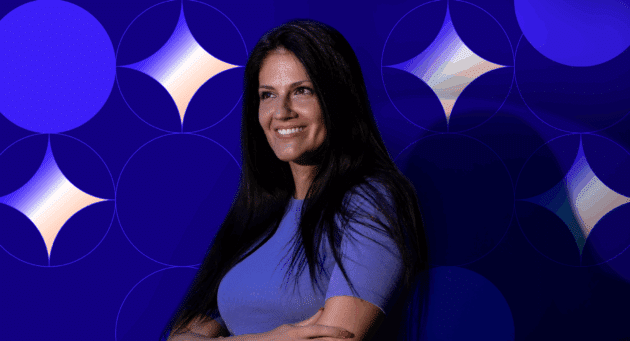- What is in-store advertising?
- What are the benefits of in-store advertising?
- Digital vs. non-digital?
- How the industry is solving the challenges of in-store advertising
- What is in-store retail media?
- How to measure the success of in-store advertising
- Is in-store advertising suitable for non-endemic brands?
With so much focus on the digital world, it’s easy to assume that online shoppers rule the retail landscape. In reality, about 83% of retail transactions in the US still happen in physical stores.
For retailers, brands, and agencies aiming to drive sales and capture consumer attention, in-store is a channel they can’t afford to ignore. That’s why in-store advertising remains a mainstay for those looking to drive real results in the retail space.
But what is in-store advertising? Is it more than just shelf talkers and endcaps? And can it really compete with the instant attribution offered by digital channels?
What is in-store advertising?
In-store advertising is a marketing strategy that targets customers while they are physically inside a store, influencing purchasing decisions in real-time. It can include digital screens showcasing products, attention-grabbing displays at key locations, floor graphics guiding shoppers, and more. The goal is to engage and influence consumers at the critical moment when they are already in a shopping mindset, increasing the likelihood of impulse purchases and promoting brand loyalty, all while enhancing the shopping experience.
You’ve almost certainly encountered in-store advertising before. Ever been walking through a store and seen a video ad for a new bag of chips on a screen conveniently positioned just above the snack aisle? That’s in-store advertising in action.
What are the benefits of in-store advertising?
When it’s done right, in-store advertising delivers benefits that can significantly impact sales and shopper engagement—and which are tough to match on other channels.
- Captures attention when it matters most. When shoppers are in a store, they’re ready to buy—and usually just feet away from the point of purchase.
- Boosts brand awareness. Eye-catching displays and promotions keep your brand top-of-mind as shoppers navigate the store.
- Provides targeted messaging opportunities. By strategically placing ads in certain sections of the store, like an ad for dog food in the pet supplies aisle, you can reach your audience more effectively.
- Drives impulse buys. Strategic placements and compelling visuals can trigger spontaneous purchases, adding to the shopper’s basket.
Digital vs. non-digital?
In-store advertising comes in a variety of formats, some suited to the digital world and others more bricks-and-mortar. But which will be best for your campaigns?
Digital formats
Digital in-store advertising is dynamic and highly engaging. Here are some popular digital options:
- Digital screens. These point of purchase ads can show vibrant, moving ads that catch shoppers’ eyes. They can be updated easily to feature the latest promotions, products, or brand messages.
- Interactive kiosks. These allow customers to interact with a brand, access more product information, or even place orders directly from the store.
- Mobile beacons. These devices send targeted ads and offers to customers’ smartphones as they move through the store, creating a personalized shopping experience.
Non-digital formats
They may be long in the tooth, but traditional physical in-store advertising formats can still pack a punch. Here are some tried-and-true non-digital options:
- Printed displays. These include posters, banners, and shelf talkers. They’re visually impactful and perfect for promoting special offers or new products.
- Product samples and demos. Allowing customers to try before they buy can be a powerful motivator. Sampling stations and live demos engage shoppers directly with the product.
- Floor graphics. Impactful graphics on the floor can guide customers to specific products or promotions, subtly influencing their shopping journey.
How the industry is solving the challenges of in-store advertising
Measuring the effectiveness of in-store advertising has always been an uphill battle.
Unlike digital channels, where clicks and conversions are easily tracked, in-store campaigns have traditionally struggled with precise measurement. How do you know if that eye-catching display actually led to a sale? Or if the floor graphic nudged a shopper towards a particular brand? These questions have always made in-store advertising a bit of a black box.
But the winds of change are blowing.
Advances in technology are rapidly closing the gap, making it possible to measure and analyze in-store advertising more accurately than ever before. New tools are making it easier to track shopper behavior and measure the impact of in-store advertisements:
- Smart sensors and cameras. These devices can monitor foot traffic and gather data on how shoppers move through the store, providing insights into which ads are catching their attention.
- RFID and Bluetooth beacons. These technologies can track when customers interact with specific products, offering a clearer picture of ad effectiveness.
- POS data integration. Integrating point-of-sale data with in-store ad campaigns helps correlate ad exposure with actual purchases, bridging the gap between discovering and buying.
We’re also seeing the rise of data-driven in-store advertising.
With the advent of online retail media networks, (something we know a bit about), retailers are now able to leverage first-party data to power in-store advertising efforts:
- Customer loyalty programs. Data from loyalty programs can help tailor in-store ads to specific customer segments, making the ads more relevant and effective.
- Personalized offers. Using first-party data, retailers can deliver personalized offers to customers’ smartphones while they shop, enhancing the shopping experience and boosting sales.
What is in-store retail media?
Perhaps the best way to think of in-store retail media is as the physical sibling of online retail media. It’s similar to traditional in-store advertising or Digital Out Of Home (DOOH), but with a key difference—it leverages customer data for real-time targeting.
Although in-store retail media is still an emerging channel, we’re already seeing some innovative ad formats: Endcap screens, self-scan handsets, and even self-checkout screens.
Thanks to its data-driven approach, in-store retail media can use customer insights from loyalty programs to tailor ads to specific shoppers’ preferences and behaviors. This personalization ensures that the right message reaches the right customer at the right time.
How to measure the success of in-store advertising
So, if physical store advertisements and in-store activations can’t match the instant tracking and attribution of digital channels, how can retailers or advertisers gauge their performance?
Here are a few of the primary KPIs you should consider if you’re planning to take your advertising in-store:
- Foot traffic. Track the number of customers entering the store and the vicinity of a specific in-store ad.
- Dwell time. Measure how long customers spend in front of specific in-store ads or displays.
- Conversion rate. Track the percentage of customers who make a purchase after interacting with an ad.
- Sales lift. Compare sales data before and after the ad campaign to determine the increase in product sales.
- Customer engagement. Use tools like surveys or loyalty program data to gauge customer interaction and satisfaction with the ads.
Is in-store advertising suitable for non-endemic brands?
It’s a fair assumption that in-store advertising is for brands that sell their products in the store (endemic brands).
But that’s not the whole story. Non-endemic advertisers can win big with in-store advertising, too.
Consider a travel brand placing ads in a grocery store. While it might seem unrelated, consider the foot traffic. Hundreds of potential customers walk by daily—many mentally planning their next vacation as they shop. Seeing these ads in a familiar setting makes customers more likely to remember the brand later. They could even leverage real-world contextual intelligence by placing ads near sun cream or luggage.
And let’s not forget about data.
With the evolution of in-store retail media we mentioned above, advertisers can target and measure much more precisely. So, while a fitness app can’t be physically sold in a supermarket, an ad there could catch the eye of a health-conscious shopper who’s on the lookout for a new workout program.
















